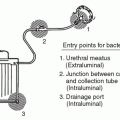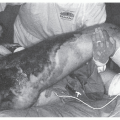The Development of Infection Surveillance and Prevention Programs
Hilary M. Babcock
Keith F. Woeltje
INTRODUCTION
The goal of an infection surveillance, prevention, and control program is to prevent healthcare-associated infections (HAIs) in patients, employees and visitors, and to achieve that prevention in a cost-effective manner (1). Therefore, every infection prevention (IP) (previously called infection control [IC]) program should formally evaluate the impact of prevention efforts and their cost-effectiveness (2,3). More recently, IP programs have embraced the concept of interventional epidemiology, which emphasizes the importance of viewing the activities and decisions made by IP from a business perspective, including global systems thinking (4).
The term epidemiology in the context of an IP program refers to the study of the enumeration, distribution, and control of infectious diseases (IDs) in its target healthcare population (e.g., patients, visitors, and employees). Individuals charged with directing an IP program must be knowledgeable in the science of epidemiology, including surveillance methodology, study design, statistical methods, infectious agents, and many other competencies (5). It is no surprise that these skills are the same set used by public health professionals, because IP was born out of public health in the late 1950s when there was mounting concern regarding the transmission of infectious agents within hospital settings.
In 1958, outbreaks of Staphylococcus aureus infections in hospitals prompted the American Hospital Association to recommend that hospitals set up IP programs (6). A few years later, in the early 1960s, the Centers for Disease Control (now the Centers for Disease Control and Prevention [CDC]) organized an investigations section that would assist hospitals in investigating outbreaks. As the 1960s progressed, medical care became increasing complex. Antibiotic-resistant organisms and opportunist pathogens presented increasing challenges to the IP and control efforts within the hospital setting (4,7). Nationwide adoption of hospital IC programs did not occur until the early 1970s when the CDC and the Joint Commission on Accreditation of Hospitals (now simply the Joint Commission) recommended that hospitals have IP programs (6,8). The landmark Study of the Efficacy of Nosocomial Infection Control (SENIC) project demonstrated that an active IP program that included surveillance with feedback of infection rates, administered by a physician and nurse with IC knowledge, resulted in a reduction of HAIs (9,10).
Because the historical development of IP programs had epidemiologic roots, personnel charged with running the IP program traditionally were expected to have strong skills not only in medical and nursing care, but also in healthcare epidemiology. More recently, the IP field has appreciated the importance of business and management skills as well. From a financial perspective, IP departments are viewed as nonrevenue-generating departments because there is no charge to the patient or payor. If careful demonstration of the value to the organization is not documented and shared with key leaders, including those who hold the purse strings, IP may find its financial resources limited or diminished. To garner resources for the program and its mission of preventing HAIs, an IP program must adopt the new approach of “interventional epidemiology” and “give sufficient weight to the economic impact of any project or activity undertaking” (4). IP program personnel must incorporate effectiveness evaluations into routine project and program planning so that they can demonstrate the value of IP and control to the healthcare organization.
COMPONENTS OF AN INFECTION CONTROL PROGRAM
An IC program has many facets; however, the central components to be addressed when developing a program are governance, personnel, and the IP plan, including the surveillance plan. Also critical to an effective program are the internal and external collaborations, compliance activities, and interventions.
GOVERNANCE
A successful IP program must have both medical and administrative support and participation to accomplish its goals. Often this is accomplished through a formalized IP committee that makes decisions and recommends policies for the facilities’ IP program (11). The IP committee reports to a governing body within the hospital, such as a medical executive group or the hospital’s administrative board. This body reviews and acts on the committee’s recommendations. The governing body may, in turn, request a review of a current topic in the community or a hospital-specific policy, practice, or issue brought forward from another hospital forum such as a surgical committee. Although the Joint Commission no longer requires an IP committee per se, the IP standards do call for the demonstration of collaboration between medical staff, administrators, multiple hospital specialties, and IP to develop and assess the IP program (12). It is necessary for a hospital to demonstrate that IP occurs in all aspects of services
rendered throughout the institution and that all employees understand their job-specific IP actions. In addition, some states require that hospitals have a formal IP committee as part of the hospital licensing rules.
rendered throughout the institution and that all employees understand their job-specific IP actions. In addition, some states require that hospitals have a formal IP committee as part of the hospital licensing rules.
Departmental Reporting Structure
Like the governance of IP, no single departmental reporting structure fits every healthcare facility. Across the country, there are many examples of effective programs that report to different roles or departments, such as nursing, quality, patient safety, or medical services. Regardless of the chain of command, the critical components are the support of the program during routine operations, and an appreciation of critical issues that require immediate attention and added resources, such as sentinel events, outbreaks, or community emergencies.
PERSONNEL
Personnel needs are established based on the size, complexity, services, and the needs of the facility and the community. A hospital epidemiologist and at least one infection prevention specialist (IPS, also called infection preventionists) are the minimum personnel needed for an IP program. The hospital epidemiologist may be a physician and in many instances is an ID physician. The expert knowledge of an ID physician is very useful; however, it is also necessary for the hospital epidemiologist to have specialized training in epidemiology and IP. The Society for Healthcare Epidemiology of America (SHEA) in conjunction with the CDC, some medical schools, and other professional organizations offer specific training. The hospital epidemiologist often serves as the chair for the IP committee and is involved in the planning and implementation of the program. The position of hospital epidemiologist is typically not a full-time position or a hospital employee; the physician contracts with the hospital for epidemiology services (13).
The IPS usually is a registered nurse or a medical technologist. Specialized training programs for IPS are offered by the Association for Professionals in Infection Control and Epidemiology (APIC), the Community and Hospital Infection Control Association-Canada (CHICA), other international societies, and other organizations including state hospital associations and health departments. Professional and practice standards define the required competencies and professional accountabilities of the IPS (5). After 2 years of IP practice and passing a voluntary, standardized examination to demonstrate proficiency in basic IP and control knowledge (14), physicians, technologists, and nurses are eligible to become Certified in Infection Control (CIC) by APIC (other international organizations may have other criteria).
Historically, one IPS for every 250 beds was recommended based on the SENIC study (9). Advances in medicine, changes in healthcare delivery, and increasing regulatory and compliance requirements have outdated this figure (1). A Delphi project sponsored by APIC noted that staffing decisions should consider the facility’s size, needs, complexity, and patient population. In general, it recommended a ratio of 0.8 to 1.0 IPS for every 100 occupied acute care beds (15).
In addition to the hospital epidemiologist and at least one IPS, support personnel are needed to allow the trained IP staff to focus on surveillance, prevention, and control activities. Secretarial support for scheduling meetings; typing minutes, policies, correspondence, and other documents; and maintaining general paperwork can greatly enhance a program’s effectiveness. Additional services for forms creation, data entry, and data management should be available to the IP program (1). The size of the facility and the complexity of the IP program will determine whether these are dedicated or shared personnel resources. Some facilities have found that sharing secretarial, chart abstraction, data entry, or database management personnel between departments such as IP, quality, and regulatory proves cost effective.
THE INFECTION PREVENTION PLAN
The annual IP plan is an essential roadmap for the activities that the IP program will undertake. The annual plan is developed based on the IP program’s strategic or long-term goals and the institution’s mission and strategic objectives. Strategic planning should encompass traditional business strategies, entrepreneurial thinking, and futurist exercises (16). Institutional initiatives, new laws and regulatory requirements, and newly published methods for preventing infections should be incorporated. Components of the plan include the overall mission and goals of the program, the goals for the year, and the scope of the IP department, including the department staffing, hours and mechanisms for providing 24-hour coverage.
Another foundational component of the annual IP plan is the surveillance plan. This plan should include the specific indicators to be followed during the year (e.g., intensive care unit (ICU) central line-associated bloodstream infection (CLA-BSI) rates and surgical site infection (SSI) rates in cardiac surgery), the rationale for choosing those indicators, case-finding methods, definitions, and data management strategies including report distribution. Evaluation of the historical data and a review of services and populations served by the institution will guide the development of the IP surveillance plan (17). The surveillance plan is only a part of the IP plan. Not only is the IP program a surveillance program, but it should also incorporate activities directly aimed at improving endemic rates. Although IP is charged with protecting against and investigating outbreaks, only approximately 5% to 10% of all HAIs are associated with outbreaks. The other 90% to 95% of HAIs are due to endemic or common causes; therefore, the majority of prevention efforts should be focused on reducing endemic HAIs and mitigating HAI risks (18,19,20).
Stay updated, free articles. Join our Telegram channel

Full access? Get Clinical Tree








